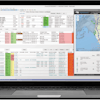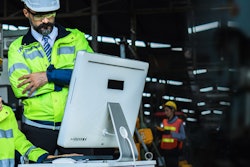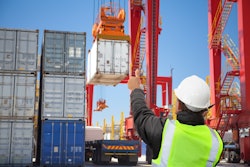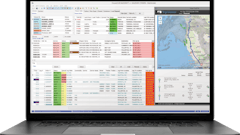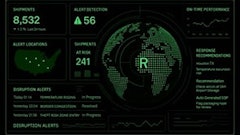
Even though the holidays and corresponding shopping peak are still months away, shippers and carriers across all durable goods need to start preparing now. There is a combination of factors that could make shipping and logistics this holiday season even more challenging and unpredictable than years past.
First, there’s the “vibes” economy. Even though the trade war concerns have ebbed for now, economic uncertainty remains. University of Michigan found consumer sentiment hit the second-lowest level on record in May. But as the soft data and hard data about the state of the economy collide, it’s unclear whether consumers will be holding on to their wallets a bit tighter during holiday shopping season. This uncertainty presents various challenges for supply chain logistics professionals, especially when it comes to demand forecasting and inventory management.
Predicting consumer behaviors isn’t the only factor that could make this holiday season the perfect storm. The past few years have started presenting new logistical challenges as extreme weather becomes more commonplace. For example, in January, an unprecedented blizzard struck the Gulf Coast, bringing over a foot of snow to areas like Texas and Louisiana that rarely see such conditions. Major interstates like I-10, I-12, and I-55 in Louisiana closed due to hazardous winter conditions, which significantly disrupted shipping times and put driver safety at risk. Snowfall is common in the Northeast, and local infrastructure is prepared for those conditions, but in states where it’s less common, eight inches of snow can cause a slew of transportation and safety challenges that shippers haven’t previously had to account for. This often results in delayed or re-routed packages.
So how do shippers and carriers account for all these factors to prepare for the most important shopping peak of the year? Luckily, there are some ways to prepare.
Part of a great strategy is practicing early and open communication with customers. One reason is to better understand when you’ll see an influx in purchasing. Whether you’re a standard retailer or an e-commerce marketplace, it’s critical to assess inventory needs early and often and as accurately as possible, since the most important part of holiday shopping is ensuring that people’s orders arrive before the holiday. Business shippers should consider liquidating less popular items or temporarily renting warehouse space to adjust inventory needs accordingly. These retailers might also find success pushing early sales to create more predictable shopping moments.
When it comes to the actual shipping process, consumers have made it clear they want transparency. Reports find almost all online shoppers (97%) feel that delivery tracking is an important part of the purchasing process in e-commerce. While peak shopping season is still a few months away, now is the time for retailers and carriers to work together on how best to keep consumers informed of the status of their shipment. That way, if there is a storm that throws the tracking off course or another external factor causing delays, consumers are kept in the loop.
Emerging technology can also help proactive communication. Business shippers can now leverage AI to pass along real-time shipping updates to customers, ensuring that they have on-demand access to the latest information on their items. If a package is going to be delayed, AI can integrate with logistics data to provide real-time updates on order status. Consumers also have access to chatbots, which are becoming more frequent in customer service, enabling them to inquire about the status of their package with real-time updates.
And, in a major breakthrough for the industry, AI can also help predict extreme weather events with far greater accuracy than ever before. This will allow shippers to communicate way earlier about weather-related delays and add in another layer of proactive communication with customers.
Ultimately, the outlook for the 2025 holiday shipping season is a bit hard to predict, but early preparations, ramped up communication with customers, and emerging tech can help shippers and carriers optimize for success.


